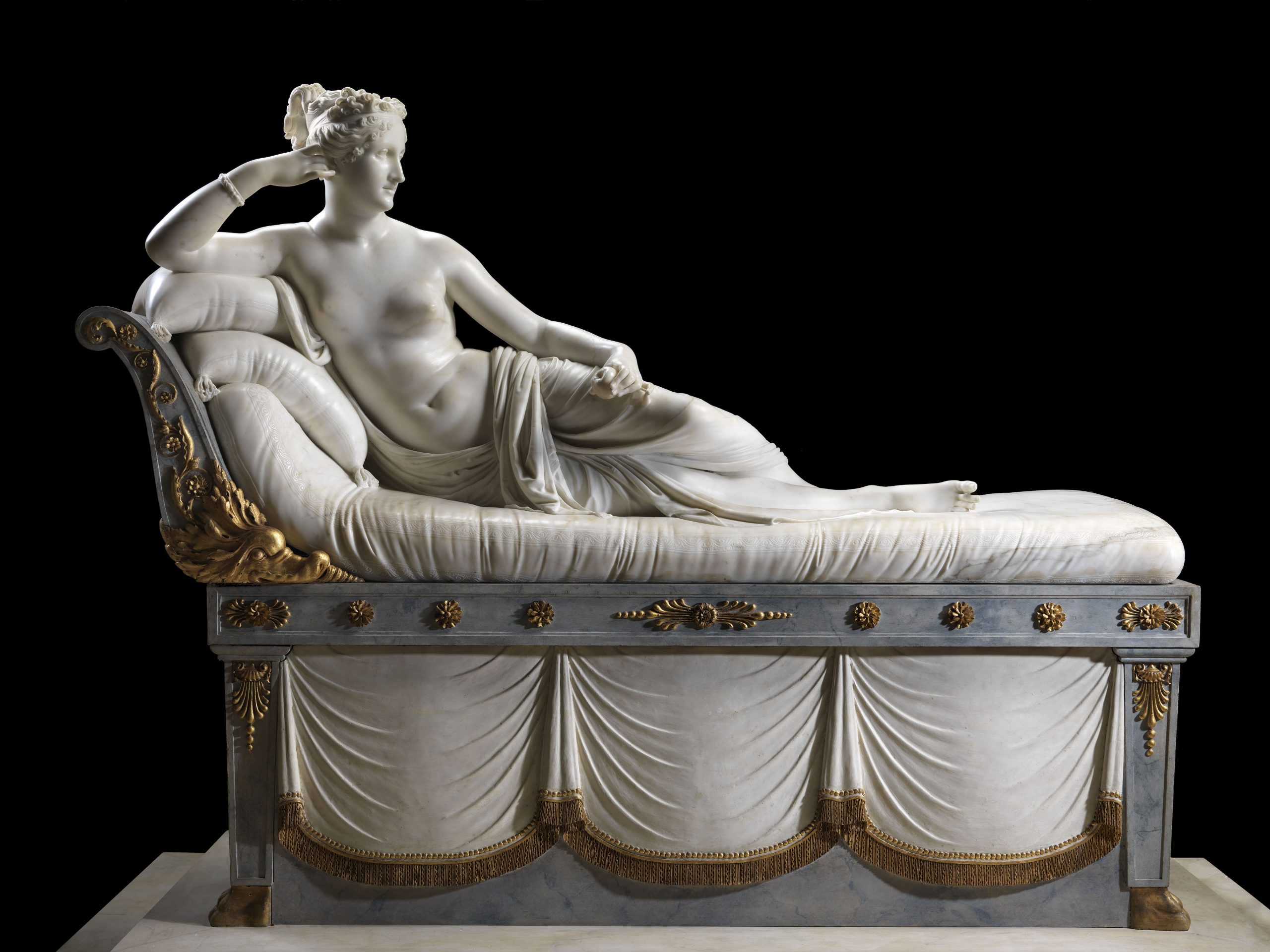CANOVA, PAOLINA BORGHESE AS VENUS VICTORIOUS

One of the Galleria’s iconic masterpieces, the portrait of Paolina Borghese was commissioned by Prince Camillo Borghese in 1804 from Antonio Canova, who finished it in 1808.
Camillo Borghese had married Pauline Bonaparte – Napoleon’s beautiful, vivacious sister – in Paris in 1803. The First Consul, who would become emperor a year later, was very pleased to be related to such a noble Roman family. Pauline was 23 years old and already a widow. Her first husband, General Charles Leclerc, had died from a tropical disease in Santo Domingo, where Napoleon had sent him together with his wife, officially to put down a revolt, but actually to stifle the scandal created in Paris by Pauline’s licentious behavior. Camillo married her without even waiting for her year of widowhood to end, and they moved to Rome, in Palazzo Borghese, where Paolina – as she was called in Italian – was able to resume the lifestyle based on display and amusements that she loved so much. The princess also enjoyed strolling in the park of the Villa, and had part of it closed to the public, thus alienating the Romans, who had always been allowed to go for a walk in the Villa’s gardens.
Even though his marriage was not particularly happy, Camillo commissioned the most eminent artist of the time to execute the portrait of his gorgeous wife.
There was a lot of gossip regarding the nudity portrayed by the sculpture and the possibility that the princess had posed undressed for the artist, and she herself is supposed to have said that “all veils may fall before Canova”. However, it is an ideal portrait, which belongs to the “grazioso“ genre of Canova’s production. Paolina is portrayed as Venus, the victor in the judgment of Paris, as shown by the apple she is holding in her hand: the most beautiful of the goddesses.
Canova summed up his figurative culture in this great work, making it an icon of his singular Neoclassicism. The pose of the princess, reclining on an elegant Agrippina – a kind of Empire-style chaise longue that was very fashionable at the time – alludes not only to the classical repertoire, the Roman and Etruscan sculptures lying on sarcophagi, but also to the tradition of Venetian painting of the16th century and the Venuses by Titian. There are many preparatory drawings of the sculpture, as well as Canova’s original plaster (housed in the Gipsoteca in Possagno), which still shows the “dots”, marks used in transferring the sculpture to marble. We know that Canova left this process to his assistants, reserving for himself the final pass: the patient smoothing, with finer and finer abrasives, that created the effect of” real flesh” and was enhanced when viewed by candle light. Canova finished the sculpture by spreading “grinding-wheel water” on it, making the surface shinier.
The rendering of the mattress is stunning. It seems to sink softly beneath the weight of the goddess. This effect of reality had an illustrious precedent: the mattress that Bernini sculpted for his Hermaphrodite, which had belonged to Scipione Borghese and, precisely during the time in which the Paolina was being executed, was taken to Paris together with hundreds of other works sold to Napoleon. Having vehemently opposed the sale of the Borghese marbles, Canova gave back a Neoclassical version of one of them. Under the agrippina is hidden the still functional original mechanism that enables the sculpture to turn 360 degrees to display itself.

Paolina Borghese Bonaparte as Venus Victorious
Antonio Canova. Carrara marble, h cm 92, with bed cm 160